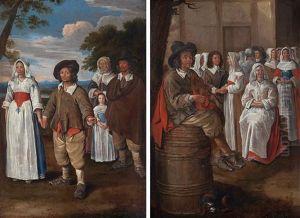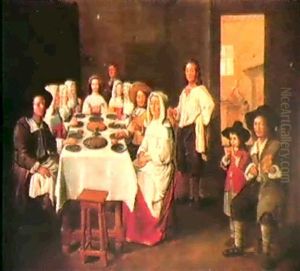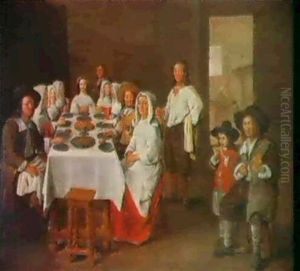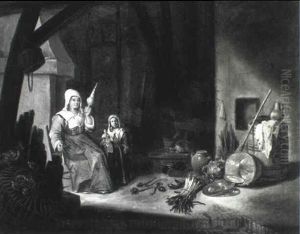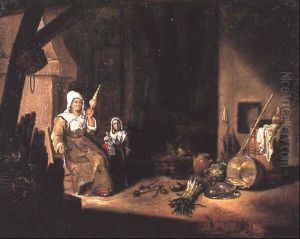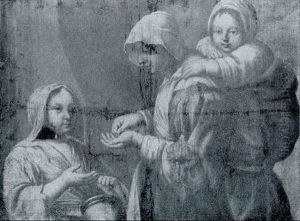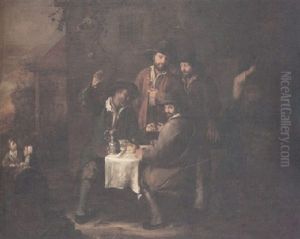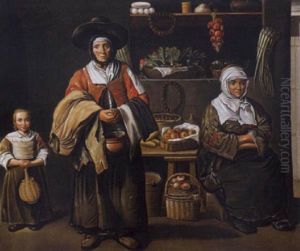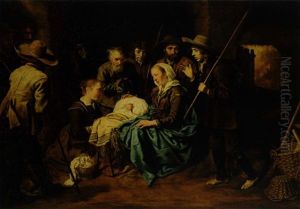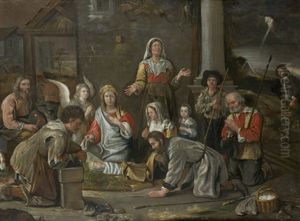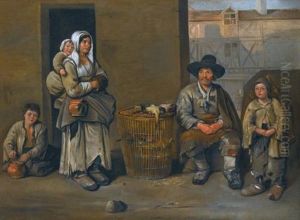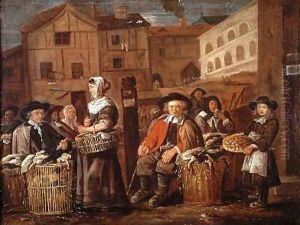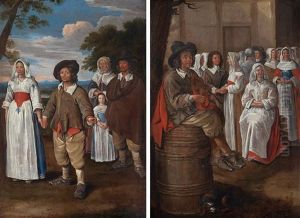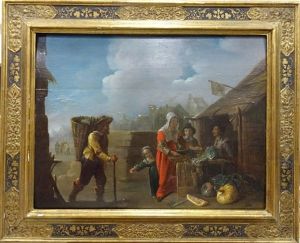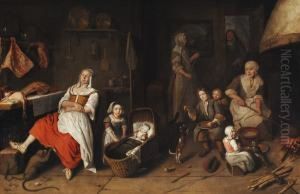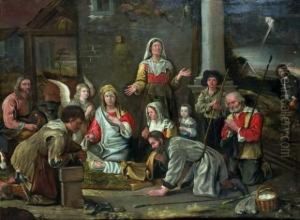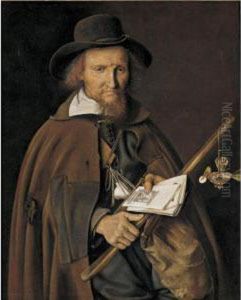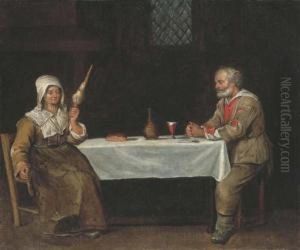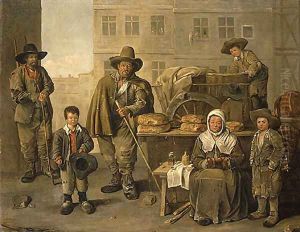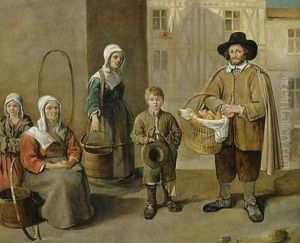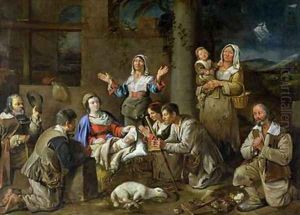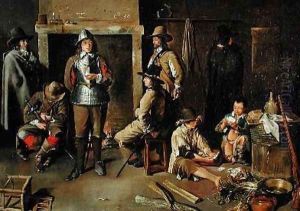Jean Michelin Paintings
Jean Michelin was a French painter born in 1623 in Langres, a small town in northeastern France. He is often remembered for his contributions to the Baroque movement, a style known for its dramatic use of light and color, as well as its emphasis on motion and clear detail. Michelin's work, however, also exhibits characteristics of the French Classical tradition, which is noted for its clarity, rationality, and orderly nature. His career spanned a period of significant artistic evolution in France, bridging the late Renaissance and the early modern period, and his works reflect the transitional nature of this time.
Michelin's early life and training are not well-documented, but it is believed that he received his initial artistic education in his hometown before moving to Paris. In Paris, Michelin became associated with the city's vibrant artistic community, honing his skills and establishing his reputation as a painter. His work garnered the attention of wealthy patrons, which allowed him to work on a variety of projects, including religious commissions, portraits, and landscapes. Michelin's ability to adapt his style to suit different subjects and patrons' preferences contributed to his success during his lifetime.
Throughout his career, Jean Michelin demonstrated a remarkable ability to capture the essence of his subjects, whether depicting the human figure or a scene from nature. His religious paintings are particularly noted for their emotional depth and spiritual intensity, characteristics that resonate with the Baroque movement's emphasis on creating a direct emotional appeal to the viewer. However, Michelin's portraits and landscapes also display a sensitivity to detail and a subtleness of palette that align with the more restrained aesthetic of the French Classical tradition.
Michelin's influence extended beyond his immediate circle, as his works were collected and admired by art lovers across Europe. Despite this, his name is not as widely recognized today as some of his contemporaries. This may be partly due to the limited number of his works that have survived and the overshadowing presence of other French artists of the same period who worked in a more distinctly Baroque or Classical style.
Jean Michelin died in 1696, leaving behind a body of work that, while not extensive, is valued for its contribution to the development of French art during a period of significant transition. His paintings continue to be studied and appreciated for their blend of emotional intensity and classical restraint, offering insight into the complex artistic landscape of 17th-century France.
